I believe in a very simple philosophy. If any restaurant, or business in that matter, crosses a century- it’s safe. More than anything else, business survival speaks for itself. So, I came across Felu Modak at Rishra, which is currently running slightly more than 170 years. And instead of sticking to the age-old process, the current owner has adapted to the modern machinery to improve the product. This story is on Felu Modak, Rishra.
The shop is around 1.5 hours drive from Kolkata and can be found on Google map here
Errr, gyan on sweets
For any Bengali, sweets primarily mean something prepared out of chhana (or cottage cheese). though it’s an unneeded generalization, please pardon my bad vocabulary. But has it ever crossed anybody’s mind, that why in traditional puja, sweets were primarily moa/ naru/ payesh/ kodma etc and no dish had chhana ? There’s folklore behind it. As chhana is spoilt milk, it was considered as not sacred and was unworthy for the god and hence was being avoided.
And there is even a theory that chhana was cottage cheese was something inspired by the cheese brought over by Portuguese. But did people use to throw away the curdled milk? No, considering the socio-economic scenario, it seemed pretty absurd. But the Portuguese brought 3 types of cheese to the Indian subcontinent, namely … cottage cheese– may be the forefather of chhana, Bandel cheese– still sold in New Market Kolkata and Dhakai Ponir. Murshidabad, Burdwan, and Bishnupur in India and Dhaka & Natore were said to have the best sweet-experts. But whatever, coming to the present time, we can’t really ignore a shop which is running for last 170+ years.
Amitava Dey is the current 6th generation owner running Felu Modak and is a nice person to talk to. I mean whoever can tolerate my stupidity, seems nice to me- but he truly is. Around 170 years back, a gentleman named Felu Modak thought of naming his sweet shop. The shop was situated on the Grand Trunk Road- the road from Kolkata to Delhi and this decision changed the whole thing. Fast forward to current days, Amitava had thought of automating the entire sweets making the process.
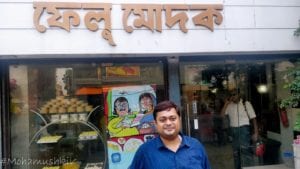
As per him, there are few problems with making sweets by hand. Firstly, as human touch comes into contact, hygiene gets compromised. Secondly and very rightly, the longevity of the sweets gets reduced. Being an engineer, he had traveled globally to find the machines and as a result, his rasogolla making machine today can produce 3600 pcs of rasogoll in an hour.


The sweet part at Felu Modak
Frankly, I’ve never seen the inside of a sweet factory having an automated machine and this was an eye-opener for me. when I reached the place, it was time for some langcha getting fried. In a large container, the langchas were getting swirled and fried. The temperature was fixed and swirling was being done constantly. As a result, the sweet was getting evenly fried. Trust me please, it was a sight to behold.
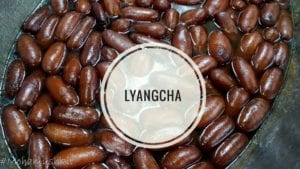
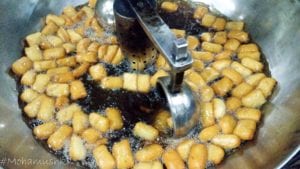
Next was the Rasogolla making machine and another gem which could make evenly sized Jolbhora Sandesh. They call it as Mohini Sandesh here. And two variants are made- Mango during summer (with nolen gur during the winter) and with chocolate filling.
There is a youtube Video link attached in the end explaining the machines and the process.
Rabri & Doi
Every self-respecting Bengali has a thing or two for the Rabri and I am no exception. So, when Amitabha told me that he makes the Rabri with a machine, at Felu Modak, I was kinda surprised. The Rabri making machine was a wonder. In the flat bottom vessel, milk was getting churned and the head (or Sar) was getting separated automatically, while two attached fans cooled the whole thing from the top. The result was their legendary mango Rabri and general Rabri.
Now, I must mention here that we have two varieties if Rabri in West Bengal- one with the thick rectangular shaped cut sar and other of the non-Bengali type, where the sar mixes with the milk, giving it a different texture altogether. This was of the second variety. Mango pulp was used for the Mango Rabri and the result was great. Though, I prefer that thick sar-Rabri, but what the heck?
Next came the Masala Doi. Ïf there can be masala chai, why can’t there be Masala doi ?” He asked, and I couldn’t answer. The Masala Doi at Felu Modak was not bad, quite good, but maybe I am a bit old-fashioned in that matter.
Labangalatika and Goja
Amarasimha’s Amarakosha, written sometime in the 4th century AD, mentions the mondo made from jaggery and honey. Mithai was sweetmeats made from Bengal gram or moong dal besan, lots of ghee, jaggery or sugar, the predecessor to `bonday’ and later the `dorbesh’. Or the `kundalini’ later known as the jilipi or the `karpurnalika’, commonly known as labangalatika today are made with flour now. Forget the history, the Labangalatika at Felu Modak is fried with ghee and it something, definitely not to be missed. They have a distinctly different jhuro Boondi, which once shaken, gives that typical sound and Darbesh is sold loose here and not as the laddu-shaped ball we’re used to get in common.
traditional… savory …
In the traditional sweets segment, Felu Modak has its Nikhuti. I must tell you, I’ve been to Jogu Moyra shop at Ranaghat and the Nikhuti there is of a completely different shape. I personally have a strong reservation on the term Äuthenticity” and “believe that recipe for the same dish changes in every 50 km. And this reinstates my belief. On the savory part, they have Kucho Nimki with the strong aroma of Ajwain, lathi nimki (same dish in a different shape) and something called as a Padma (meaning lotus) Nimki. It’s a big circular nimki with designer external looks.
Also, I am told that they make small babu luchi (not the stuffed kachori) fried in ghee in the evening, but maybe I’ll taste it on some other day.
Sweet Tatwa for marriage
But even after all of these, the final surprise was waiting for me. During our marriage days, we used to get one mis-shaped idol of a fat couple (we used to call it bor-bou mishti) made with kheer. And in most of the cases, they were inedible. But, now, they have become a work of art and in Felu Modak, they’ve taken it to a form of art. I saw a rice platter made of chhana, where even the individual rice granules were prominent. It’s priced at 3000/- and definitely needs to be pre-ordered. But it surely needs a special mention. It can be checked/ pre-ordered here.
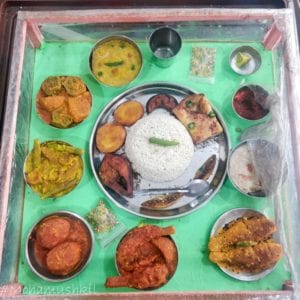
I must say, when heritage and age-old recipes meet modern technology, the result is something out of the world and Felu Modak definitely needs a round of applause for it. Please have a look at the video here for the whole show. If you know of any such interesting places, do let me know in the comments section, please.
Bon apetit !!!
I can be reached at 9903528225 / indrajit.lahiri@ymail.com
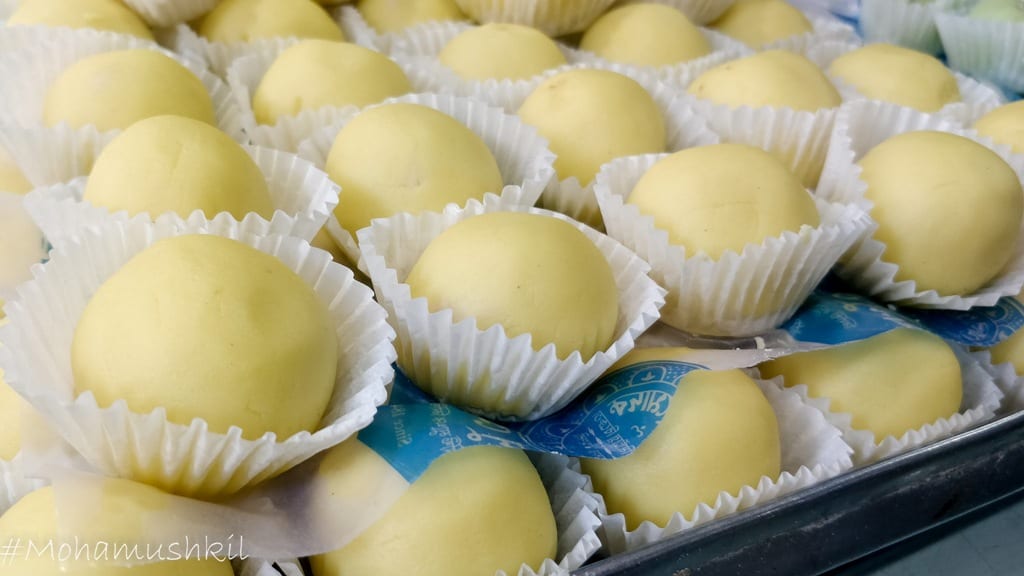
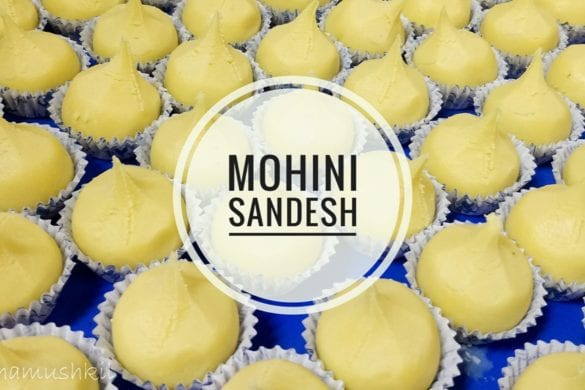




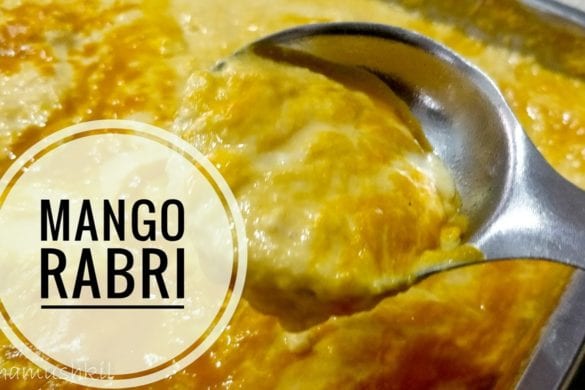


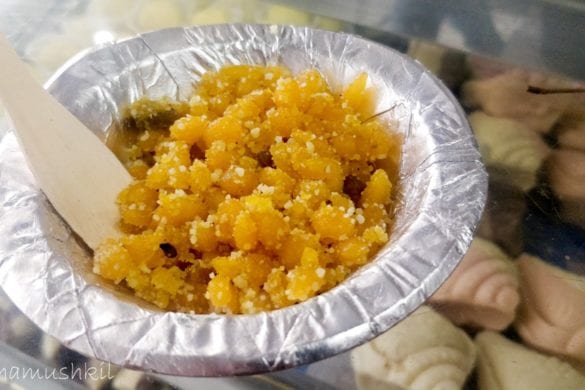

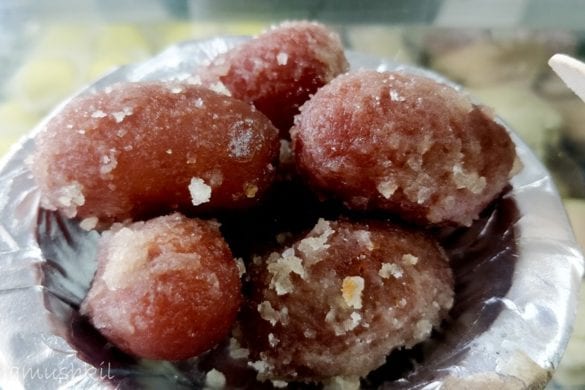

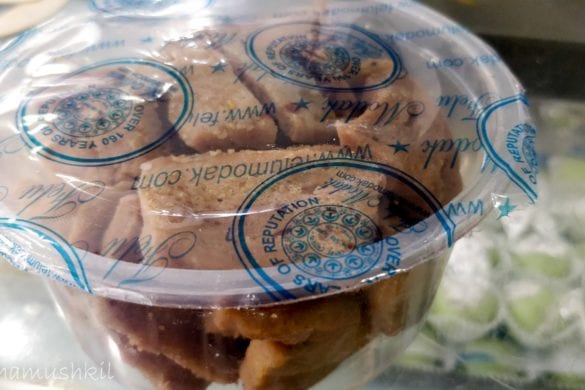
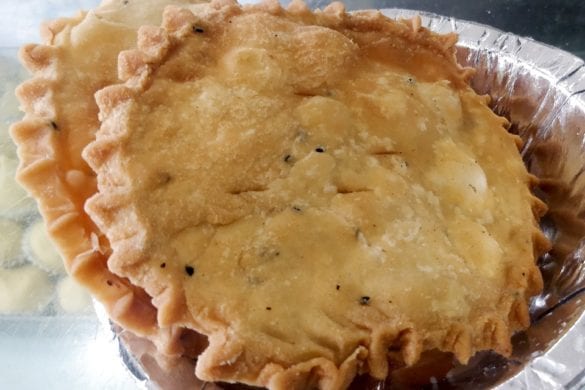
3 comments
👌👌👌
[…] and document the same. If you know of any special district sweets, please let me know. I must thank Amitava Dey, owner of Felu Modak for helping me with the project and Ranjit da for taking me around Kalna […]
[…] But if you have plans of traveling to the outskirts of Kolkata, Fel Modak might be one of your best bets. Please check the place here. […]